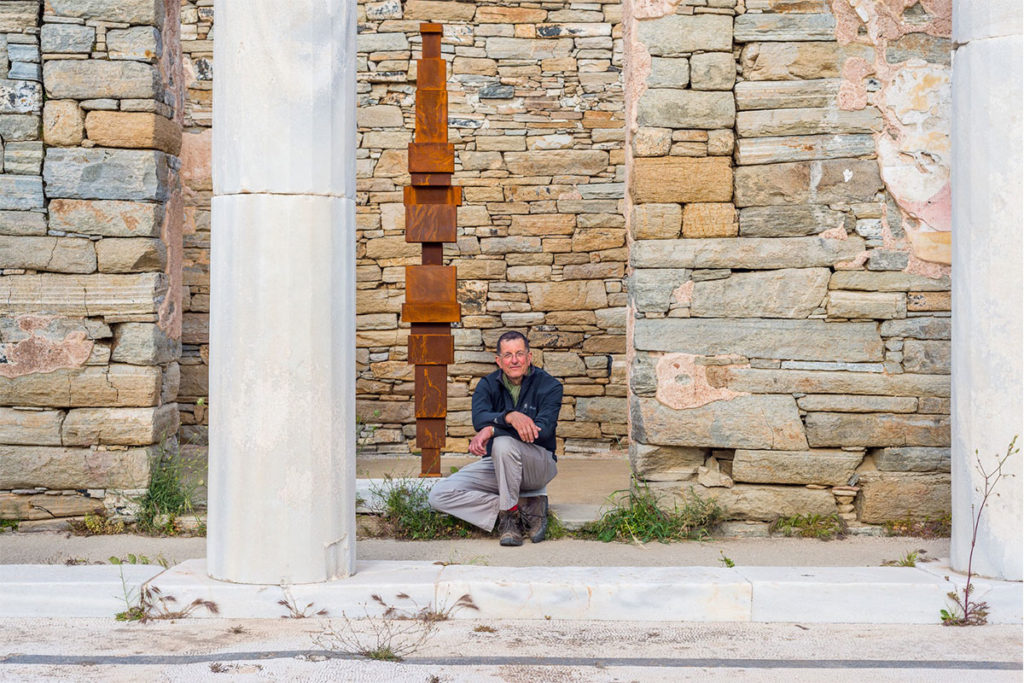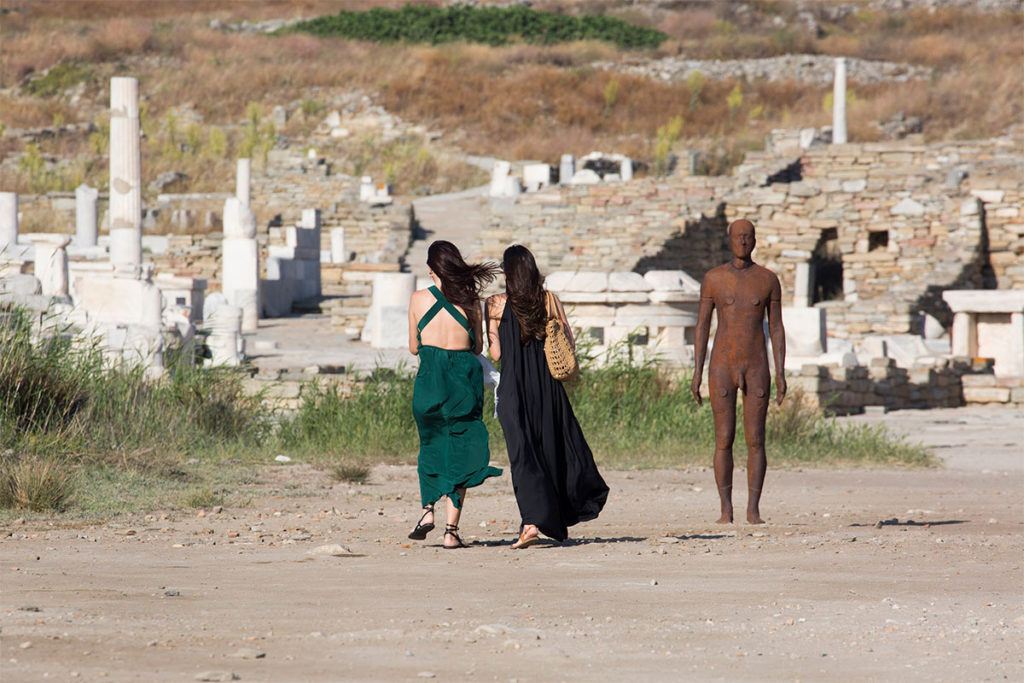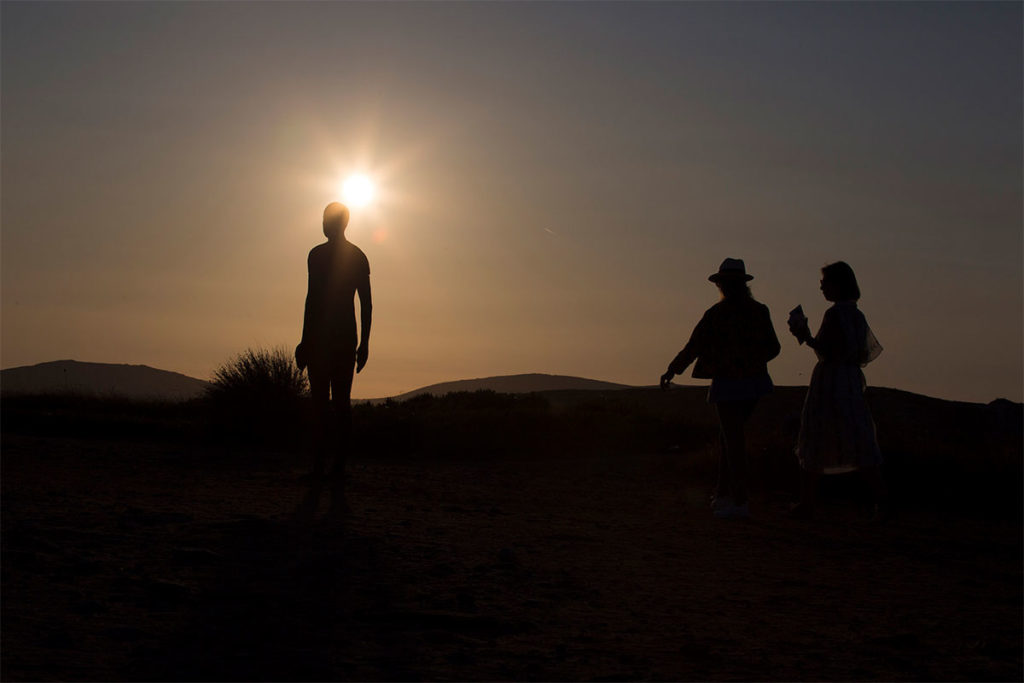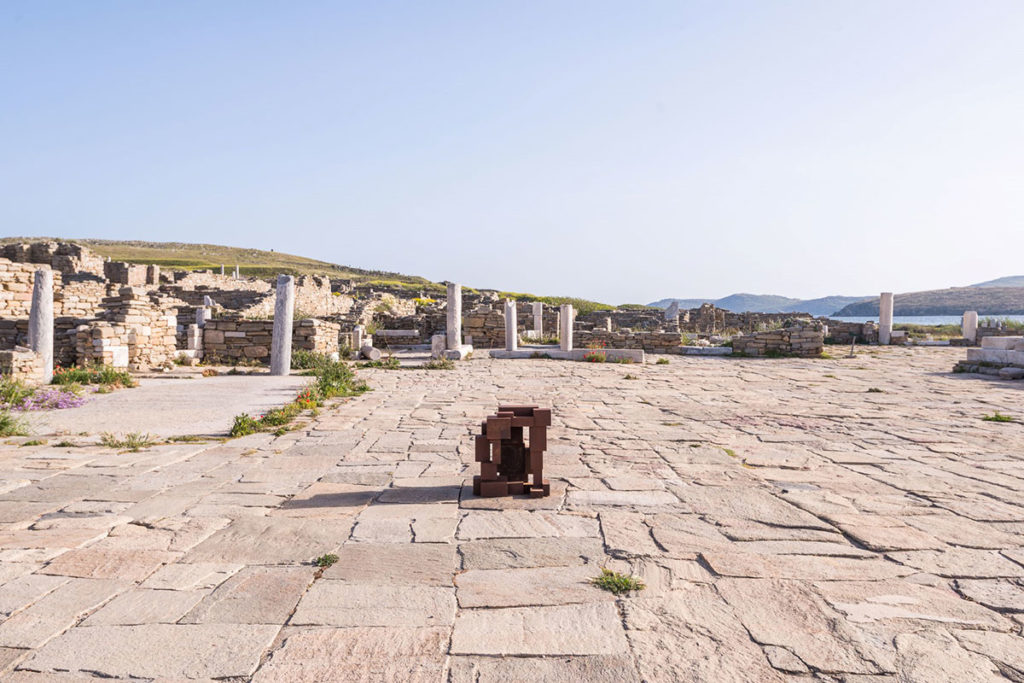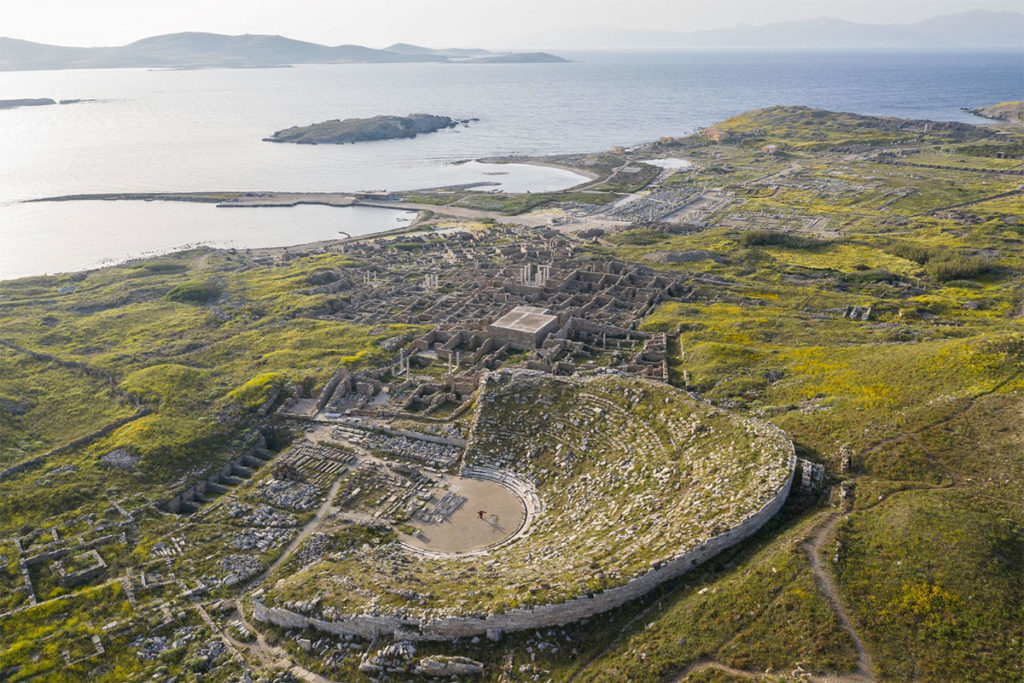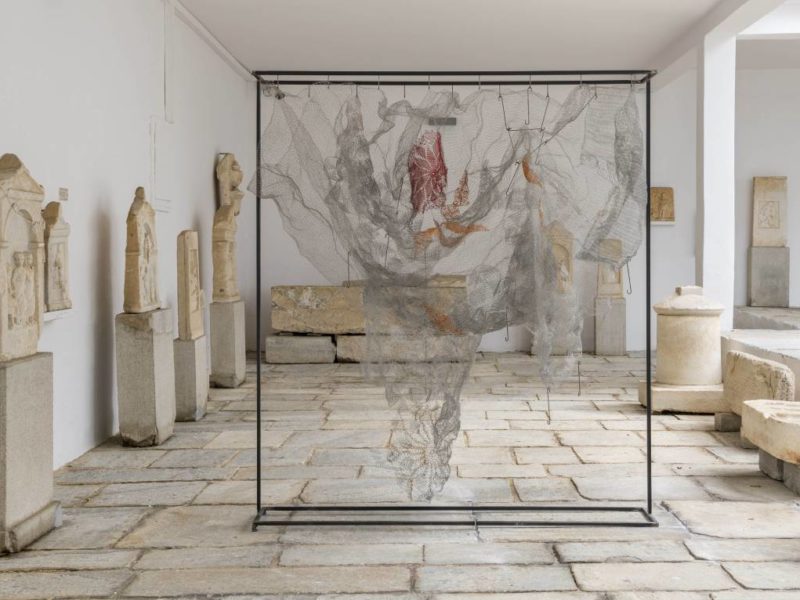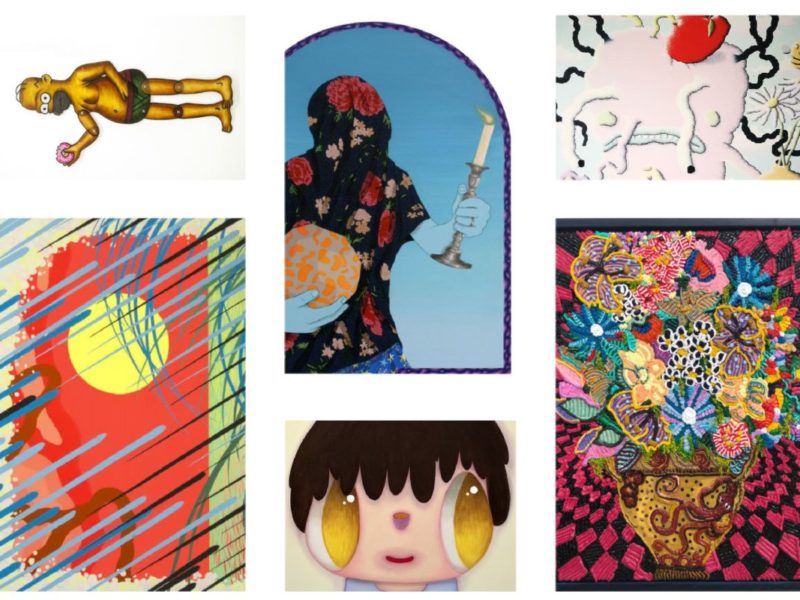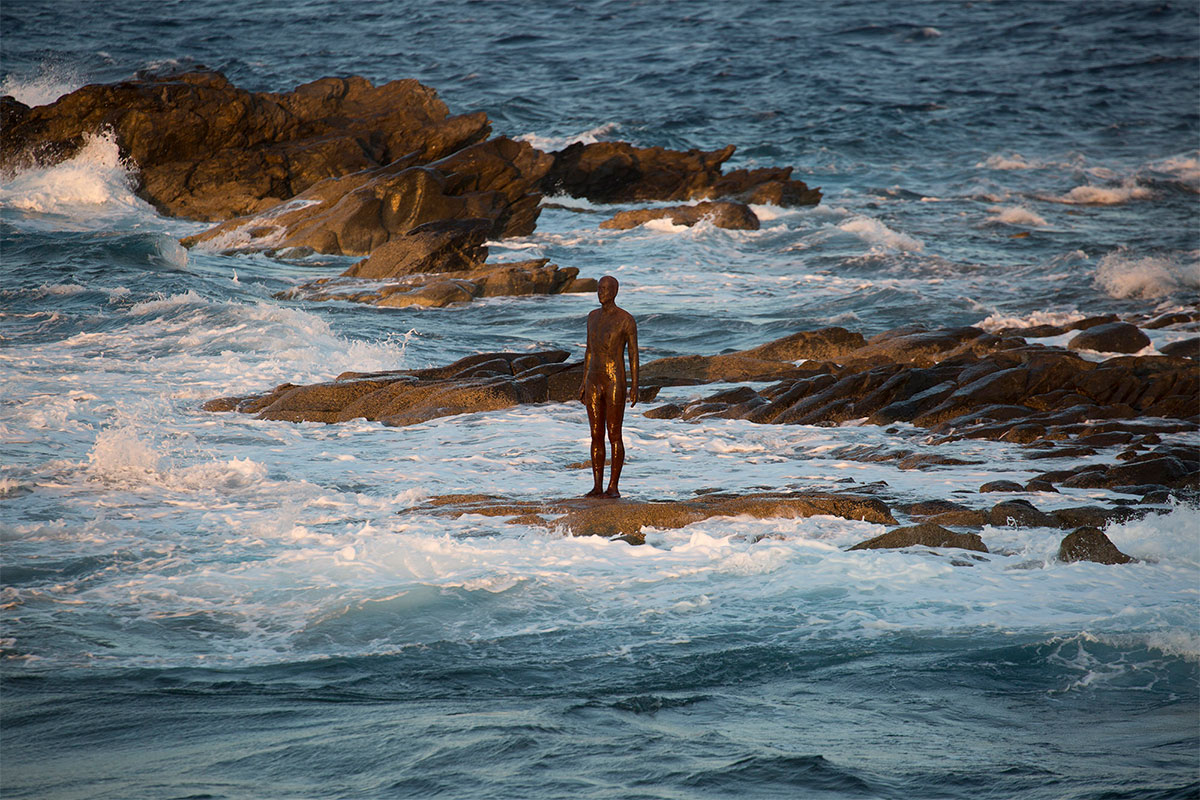
SIGHT | ANTONY GORMLEY ON THE SACRED ISLAND OF DELOS
SIGHT is organized and commissioned by NEON. From May to October 2019, on the archaeological site and the Μuseum of Delos, the non-profit organization NEON, founded by Dimitris Daskalopoulos, and the Ephorate of Antiquities of Cyclades present an unprecedented exhibition of contemporary sculpture by British artist Antony Gormley.
Gormley (b.1950) is one of the most renowned artists of our time. During the past 40 years, his sculptures and installations have challenged our perception of space and the human body.
As an undergraduate at Trinity College, University of Cambridge, Gormley studied archaeology, anthropology and art history, equipping him with a deep understanding of the diversity of human cultures and their origins. These interests led him to leave England in 1971 and embark on a transformational journey: hitchhiking through Europe, on to Turkey, Syria, Lebanon, Iran, Afghanistan and Pakistan, arriving in India a year later where he lived for two years, studying Buddhist meditation.
He returned to London in April 1974, knowing that he would dedicate his life to art. This early expedition has had a defining influence on his sculpture, which focuses on the body, its position in space and its connection to the elements and time.
In this installation on Delos, Gormley repopulates the island with iron ’bodyforms’, restoring a human presence and creating a journey of potential encounters. He has installed 29 sculptures made during the last twenty years, including 5 specially commissioned new works, both at the periphery and integrated amongst Delos’s archaeological sites.
The works animate the geological and archeological features of the island: a granite rock in the middle of the Cycladic Islands in the Aegean less than 5 kilometres long and 1.5 kilometres wide, which has a past filled with myths, rituals, religions, politics, multiculturalism and trade. Its intertwined and contrasting identities, as both holy place and commercial town, combined with its topography and geographical location, made the island a singular and cosmopolitan Hellenistic town.
‘I treat the body as a place encouraging empathic occupation of that which lies the other side of appearance: what it feels like.’
Mythology tells us its first name was «Άδηλος» (A-Delos), meaning ‘the non-visible’ – a floating rock with no fixed location. It became «∆ήλος» Delos, ‘the visible’, when Zeus arranged for Leto, his mortal lover, to find refuge there, safe from the wrath of his wife, the goddess Hera. When Leto gave birth to twins Apollo, god of light, and Artemis, goddess of the hunt, the island’s destiny and future prosperity was assured.
This unique history is imprinted on Delos’s architecture, sanctuaries and houses, and in the past was animated through rituals that celebrated the gods and protected the island. Later, sanctuaries to foreign deities, including Serapis and Isis, were built here.
Historical narratives record that humans occupied Delos at the highest point of the island, Mount Kynthos, during 2500–2000 BC and remained through ancient and classical times up to 69 BC, when the majority of the inhabitants abandoned Delos as it was no longer a vital commercial port on the Mediterranean routes. Today, with the exception of archaeologists safeguarding the island and those undertaking scientific research, Delos is uninhabited. Its ruins, like those at Pompeii, stand devoid of human presence.
Gormley completely reinterprets the function and purpose of sculpture, transforming the traditional statues and totems of the ancient world that once adorned public squares, temples and private dwellings into sites of empathy and imaginative projection.
The first connection between visitors and the work is established before they even set foot on Delos. Approaching the rugged northwest coast, they catch sight of a lone figure (from Gormley’s series Another Time, 1999–2013), standing sentinel on a rocky promontory at the water’s edge.
Two more works from the same series – also looking towards the distant horizon – stand on Plakes Peak and on Mount Kynthos, and another similar work stands in the waters of the harbour. Further sculptures are integrated with archaeological sites across the island, from the Stadium to the Τheatre district and from the merchant stores to the Μuseum site.
Gormley has studied the temples and the sacred enclosures, the horizon and the topography created by the wind and the salt. His sculptures, taking naturalistic, cubic and more abstracted forms, either stand or lie on the ground, exposed to the elements. Interacting with the island’s topography, the works appear and disappear. They activate the elemental character of the island and its human history, establishing a connection with our collective memory. Gormley respectfully engages the audience in an experience that does not compete with the space or its history, but rather, establishes a physical and intellectual connection with our collective memory.
He proposes a radical openness: ‘Art is about reasserting our first-hand experience in present time.’ Visitors to Delos are invited to connect with time, space and nature, which inevitably link to our shared future. Gormley on Delos reminds us how central art is to the human story.
